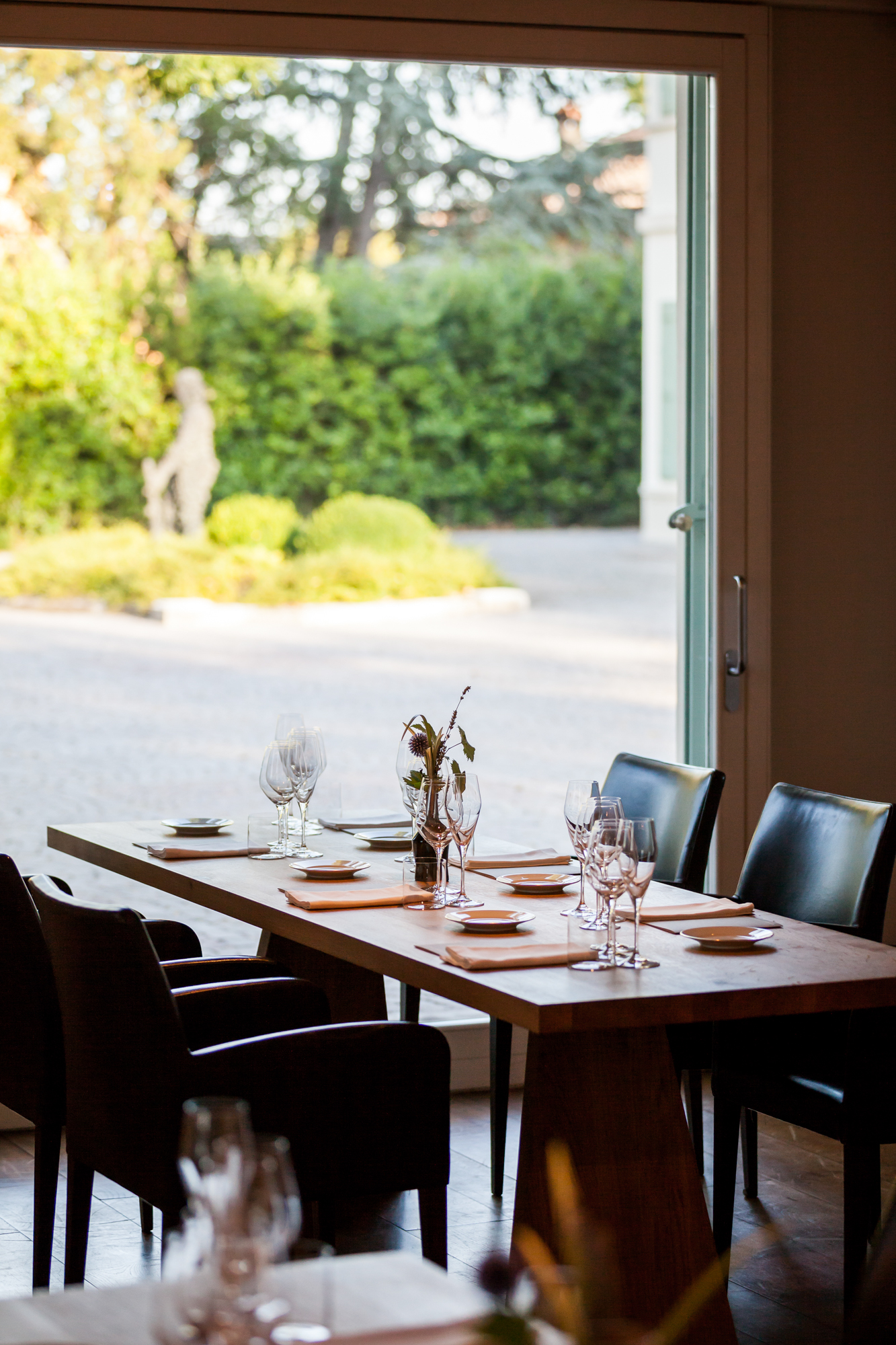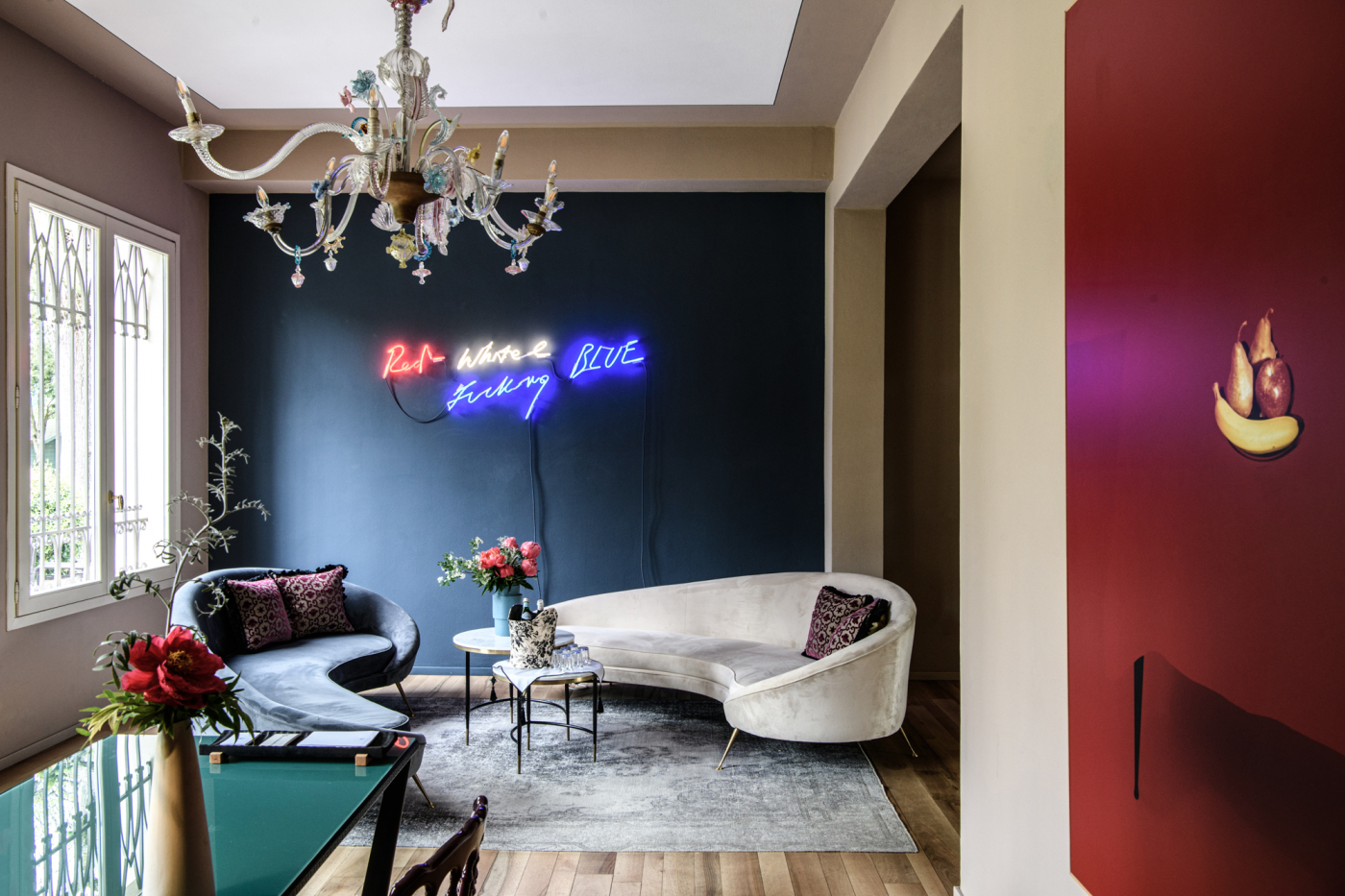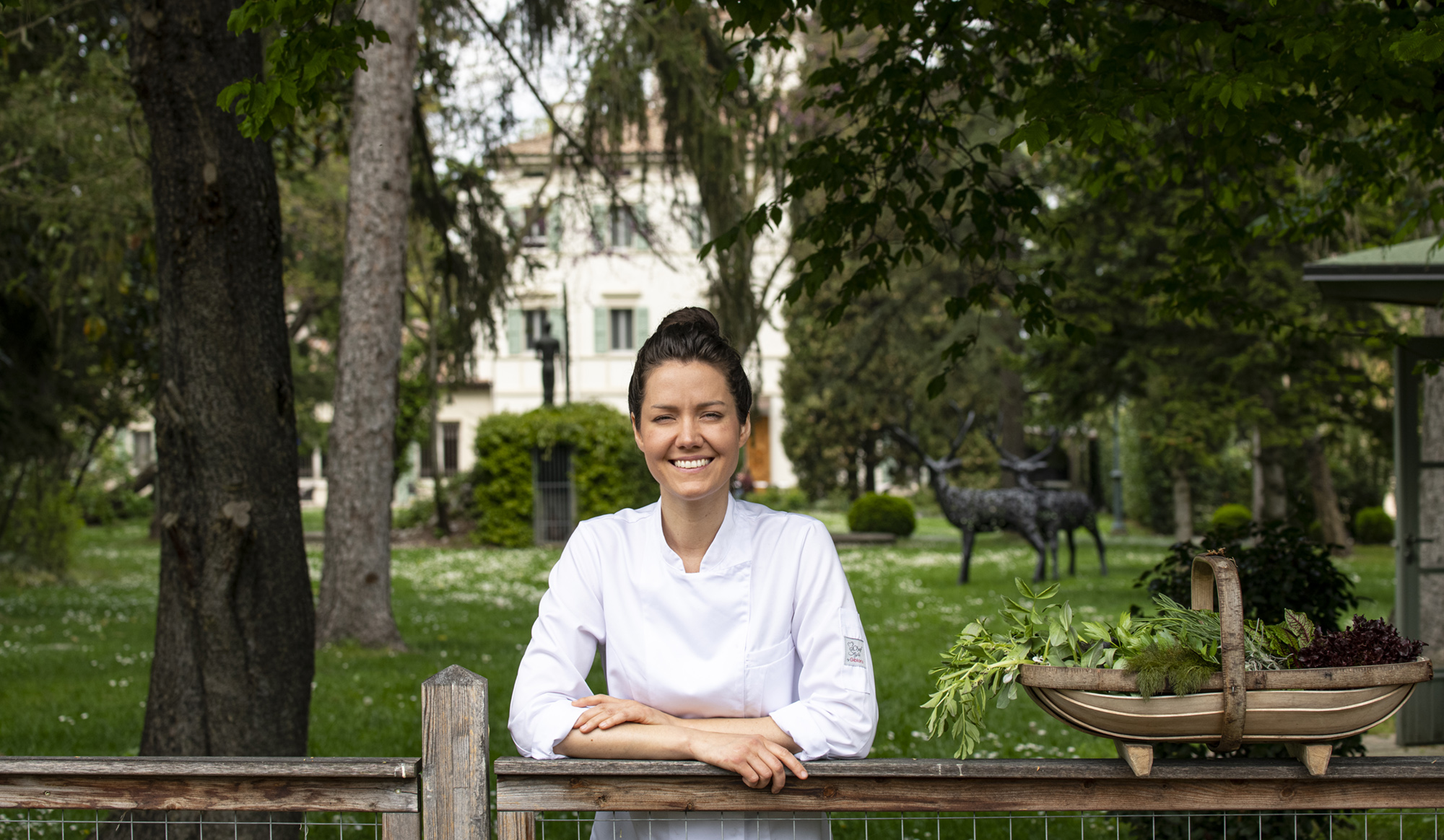Modena. The land of Slow Food and Fast Women. Or is it Slow Women and Fast Cars? Hang on; Fast Food and Slow Cars? No, that can’t be right. Modena, the land of Slow Food and Fast Cars? Anyway, I was in Modena. Tortellini was invented there, and the best balsamic comes from those parts. Pavarotti was from Modena, and so are Ferraz, De Tomaso, Lamborghini, Pagani and Maserati. Okay, so fast cars are definitely from Modena. And so is Massimo Bottura.
Jessica Rosval is not from Modena. She is not even Italian. She is Canadian, the land of Slow People and Fast Bears. I read that bear attacks in Canada are increasing, although statistics are that 1.6 people are killed in North America every year by grizzlies. How do they measure that? 1.6 is less than two people but more than 1.5, so a body minus a limb, or maybe if all you can locate is the head? And those are just the bodies found and recorded. Anyhow, Jessica left Montreal for Whistler in 2011 and then for Italy and Emilia-Romagna in 2013. An ambitious cook with European kitchen aspirations, she climbed the ranks at Osteria Francescana for several years until Massimo chose her to lead the brigade at Casa Maria Luigia. Last year she was voted The Rising Star at the Best Chef Awards in Madrid, and this year she was honoured by Identita Golose as Italy’s Best Female Chef. She isn’t even Italian.
What exactly is meant by Slow Food, and why does it matter? Of all the modern food movements, it is the most seductive and the least well-understood
At Casa Maria Luigia, Massimo and Lara Gilmore’s lovingly restored 18th-century guesthouse in the Emilian countryside, Jessica and her kitchen team front the onsite Francescana restaurant, stationed within an old carriage house, and prepare breakfast and snacks every day for guests, with ingredients from the vegetable garden – mini pea tarts, creamy bitesize tiramisu, crackers, cheese, chilled Lambrusco. There is also an outdoor wood-fired pizza oven, where weekend treats are sizzled-up for jazz Sundays with musicians from the Cotton Club Speakeasy alongside the Tóla Dólza brunch, where the waft of warm dough and parmesans of varying ages smell like heaven. She is also a co-founder, along with Caroline Caporossi and Maria Assunta Loele, of Roots and the Association for the Integration of Women, non-profits that help train migrant women by providing them access to a paid professional training programme with the intent of them then working towards a career in the culinary industry. And on top of all that, her evening responsibilities involve cooking, plating, serving, presenting, storytelling dishes and the hall of famers from Osteria Francescana five nights a week, telling the Massimo story.

Francescana at Maria Luigia
If you’ve ever eaten at Osteria Francescana or seen the Chef’s Table episode on Netflix or the online Masterclass series or any of the cookbooks, then you’ll know your Crunchy Part of the Lasagne from your Strawberry Fields Forever. These are the now iconic dishes from the restaurant, many redefining how we view fine dining and the plating and presentation of such lavish recipes; shattering the illusion of common restaurant practices, or at least, what is considered by many as the type of food that should be the restaurant enactment of the so-called authority and weightage of French pervasive haute cuisine. Oh, no, no, not here, not in Modena, not from Massimo. Merci, France, but your culinaire revolución burned out long ago.
The Osteria Francescana dishes have become so celebrated and requested, that the decision was made in 2019 to remove them from the restaurant and present them together as part of a nostalgic, celebratory collective at Casa Maria Luigia, where guests can enjoy them continually and allowing Massimo and his team to focus on new menus and culinary creations. Although Jessica and Lara present the dishes, it is not uncommon for Massimo to make an appearance, as he did when I ate there recently. He will often hotfoot it across town, travelling between Osteria Francescana and Casa Maria Luigia in one of his many Fast Cars or motorcycles, throttled and blasted from an enviable garage collection where he stockpiles roadsters and hot-rods like kids collect Hot Wheels.

Casa Maria Luigia
Before jumping into the food of Emilia-Romagna and the menu at Casa Maria Luigia, it might be helpful to take a moment and define terms. What exactly is meant by Slow Food, and why does it matter? Of all the modern food movements, it is the most seductive and the least well-understood. The term was coined in 1989 during protests against McDonald’s opening in Rome; although having looked into this; I discovered that it is not the most controversial outpost of the golden arches in Rome. In 2014, during construction in the city, an ancient road was uncovered that stretched about 150 feet, complete with skeletal remains. While it isn’t uncommon for construction sites in Europe to uncover historical artificial – remnants of the Roman Empire are abundant throughout Italy – it was the fact that McDonald’s decided to cover the bones with a glass ceiling, which then became the floor within the fast food outlet; so you can look down on decomposing Romans while you scoff your nuggets. I have gone off-topic, but suffice to say, Ronald and his insatiable thirst for globalised capitalism and fast food helped coin the term and subsequent movement of Slow Food, and when talking about food and producers in Emilia-Romagna, that matters.
For the two days and nights I spent at Casa Maria Luigia, I marked off Massimo’s manifold culinary imprint across Modena, dining at Franceshetta 58, Cavallino – a restaurant partnership with Ferrari – and the flagship Osteria Francescana; and on leaving Modena for Florence, at Gucci Osteria, which bears his name. At Casa Maria Luigia, though, I was alone; made evident further by the gushing couples and newlyweds around me, holding hands in the gardens and running through fields of sunflowers; others playing footsie under the table at breakfast. I once stayed on the island of Bora Bora alone for four days, albeit within the vacationist strangulation of ruttish newlyweds, and this brought to mind the same uneasy feeling of solitary melancholy.

The living room at Casa Maria Luigia in Modena
Oh, but to be in love and stay here. I couldn’t think of anything more beautiful. To rummage through Massimo’s vinyls and chance upon Lara on the patio, with an espresso and doughy treat from Jessica’s loving alfresco oven. Shedding all invention and fairy-tale hyperbole, I could do it, I really could. Jessica, your food is effortful and immense with the whirring attention to detail of your surroundings and Slow Food ethics, the understanding and the underscoring of conviviality, the shared table with regional parish produce; and, if you’ll have me, then I’ll drop it all, everything, everyone, and I’ll move in now. I’ll wash up and plate up while lapping up your talents. I will scrub the kitchens spotless and maketh the rooms. All I ask for in return is to be fed.
Jessica fed me twice at breakfast and again in the evening for the nine-course menu. I can’t think of anything more personal and amorous than being cooked breakfast by someone in the Italian countryside; being poured steaming coffee from the mocha pot as plates of smoked cotechino sausage with zabaione and freshly-baked cookies arrive. When someone prepares a plate of food meant just for you, putting time and care into its preparation, it shows intimacy. It doesn’t matter if it’s pancakes or Emilian sausage, although, for the record, I’m going with sausage every time. Sure, it was a communal breakfast setting with other paying guests, but I didn’t see it through such a conventional lens, and I would thank you not to ruin my romantic ideal. And what a breakfast. The freshly-baked brisée erbazzone, crammed with spinach; large airy-pocketed gnocco fritto dressed with ricotta, generous slithers of salty prosciutto di Modena and dabs of Massimo and Lara’s own Villa Manodori balsamic oil; and a parade of house-made honey and jams.

Casa Maria Luigia
The reality is that Jessica hasn’t even started yet. Not really. Much of what she has been doing is within the Francescana wheelhouse, presenting someone else’s plates and telling someone else’s story. For all of the soft-baked focaccia and brisée erbazzone, as wonderful as they are, such repetitive creations keep her by the stove; a repetition which she then continues in the evening with the Osteria Francescana classics. As the recent, bulging bag-load of awards suggests, there is a serious and undeniable talent here and an ambition Modena hasn’t seen since, well, since Massimo. And he is Italian.
Rumours abound there is something in the works, though. Something bubbling in the latter stages of creation that will see Jessica front her own restaurant, perhaps within the wilds of the Modenese provinces, shadowed by a mighty dreamscape of trees? Watch this space, I suppose. As for Casa Maria Luigia itself, it is, well, I am still trying to figure that out. I don’t mean that disparagingly, the opposite, in fact. I could replicate the flowery narration of other tourist assessments or describe in it simplistic but factual prose, the postcard imagery of it all, but how pedestrian and reductive is that?

Detail of the dinig room at Villa Luigina – Casa Maria Luigia in Modena
I think Casa Maria Luigia is a triumph of wishful thinking, where I spent 48 hours and imagined how life might have been if I wasn’t me or if I had paid more attention in school. It is a place of misty illusion and flirtatious laughter, smelling of tomatoes and oleanders. To the adept foodie-sniffer, mortadella carries on the wind. It is the dreamy British ideal of a lost Europe, the context of a landscape explained and corroboration, if it were needed, of our supranationalism adrift. It is truthfully and wonderfully the Emilian countryside, the stuff of amorous Anglian reverie. After only a few brief hours, the visiting washashore can become fluent in the language of Emilian hospitality, all “ciaos” and “come stai?” and the flamboyant gesticulation of its people. I assimilated surprisingly quickly, the mortadella and plentitude of flora still set in my nostrils. Arriving back in England, it smelt of cannabis and hostility.
Massimo and Lara have successfully created a blissfield retreat, decorated in their private art and adorned with a mountainous number of books and vinyl. Guests snoop and mingle in the garden, in the kitchen, and by the pool, sharing coffee and Lambrusco, cookies and vivacious vacation stories, undergoing a palpably Edenic transformation. As long as they remain, they can naturally melt into the laid-back Emilian ideal for a time, and that is worth the journey. They can tour Massimo’s toy shop garage, see and taste the onsite Villa Mandodori balsamic oil production and spend time in the company of some of the nicest people on earth. For an added extra, they can book the Osteria Francescana experience within Casa Maria Luigia; and be fed by Jessica, one of the country’s brightest culinary talents. She isn’t even Italian.
Casa Maria Luigia, Stradello Bonaghino, 56, 41126 Modena, Italy
casamarialuigia.com; +39 059 469054










